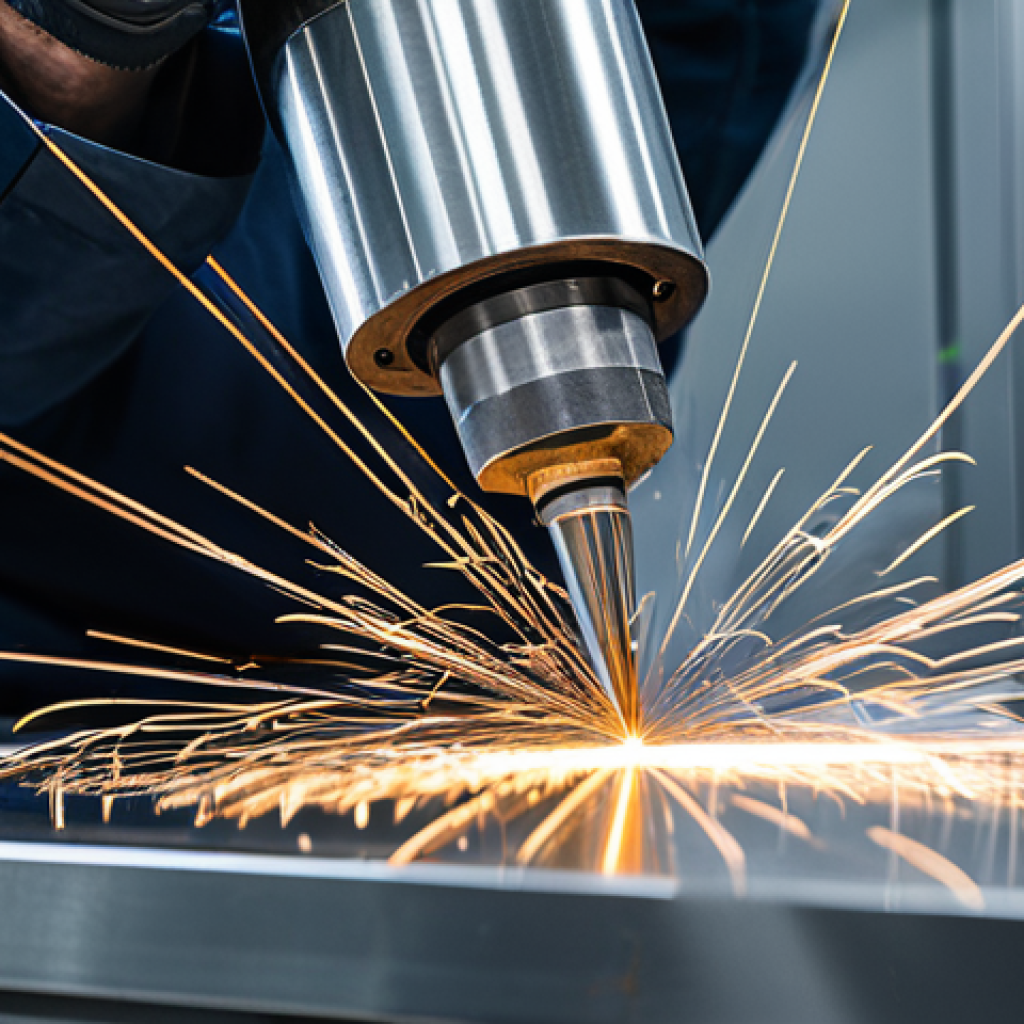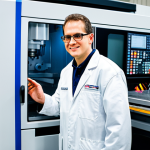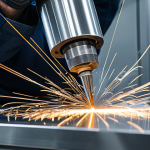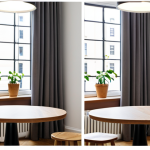There’s a distinct thrill, almost an artistic high, that comes from witnessing a raw sheet of metal transform into a delicate, intricate piece of art.
For me, stepping into a workshop where a laser cutter hums to life, casting its focused beam upon steel or brass, is utterly captivating. I remember the first time I truly saw the precision it offered – the almost surgical cuts creating designs so fine they’d be impossible by hand, opening up a whole new realm of possibilities for creators and engineers alike.
It wasn’t just industrial machinery anymore; it felt like a tool that democratized incredible craftsmanship. This fascinating intersection of art and advanced manufacturing has profoundly reshaped the world of metal craft.
We’re currently experiencing a massive surge in demand for highly personalized and bespoke metalwork, from custom jewelry that tells a unique story to stunning architectural elements and even high-performance components for niche industries.
Laser cutting stands at the forefront of this trend, enabling artists and businesses to quickly prototype, iterate, and produce complex designs with unparalleled accuracy, turning once labor-intensive tasks into a seamless digital-to-physical process.
It’s no longer about mass production; it’s about precision, customization, and bringing imaginative designs to tangible life. Looking ahead, I firmly believe we’ll see artificial intelligence seamlessly integrated into the design process, allowing for even more complex, algorithmically optimized patterns and structures that are both aesthetically pleasing and structurally sound.
Furthermore, there’s a strong push towards more sustainable metal alloys and greener manufacturing processes within the industry, ensuring that this incredible technology not only creates beauty but does so responsibly.
Let’s find out precisely how this is reshaping the craft world.
Unlocking Unprecedented Design Freedom and Precision
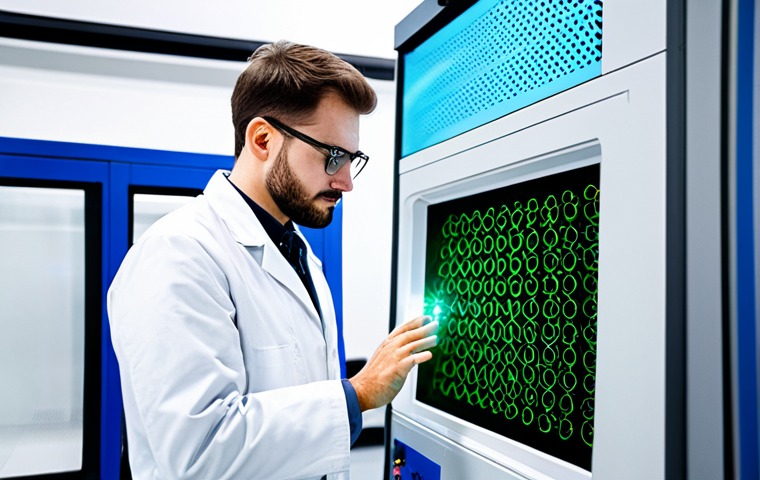
When I first truly delved into the world of laser cutting for metal, it wasn’t just the speed that astounded me, but the sheer, breathtaking precision.
Forget the limitations of traditional methods like sawing, drilling, or even hand-finishing; this technology operates on a microscopic scale, allowing for intricate patterns, sharp corners, and unbelievably fine details that were once the exclusive domain of highly specialized, time-consuming artisan work.
It’s like having an invisible, infinitely sharp scalpel that can glide through steel, aluminum, brass, or copper, leaving behind perfectly smooth edges without distortion.
I remember a project where we needed to cut out a highly complex geometric pattern for a custom chandelier – something that would have taken days of careful, potentially error-prone work by hand, but with the laser, it was a matter of hours, with every single cut flawless.
This level of accuracy means less material waste, tighter tolerances, and ultimately, a higher quality finished product that simply radiates professional craftsmanship.
For a creative mind, this capability isn’t just a technical upgrade; it’s a liberation, transforming abstract ideas into tangible realities with a fidelity that feels almost magical.
The Surgical Precision Beyond Human Hands
One of the most compelling aspects of laser cutting is its ability to achieve cuts so precise they border on the surgical. We’re talking about tolerances that can be measured in microns, allowing for interlocking parts that fit together without a whisper of a gap, or designs so delicate they seem to defy the very nature of metal.
This isn’t just about making things look good; it’s about functionality, especially in high-performance or precision engineering applications where even a tiny deviation can compromise the integrity of a component.
I’ve seen custom gears, miniature architectural models, and even intricate jewelry components produced with this method, each piece a testament to the machine’s unwavering accuracy.
It eliminates the need for extensive post-processing like deburring or sanding, which saves immense time and labor costs, and significantly reduces the potential for human error.
It truly changes the game for bespoke metalwork, allowing artisans to push boundaries that were previously unreachable.
Complex Geometries and Infinite Customization
The digital nature of laser cutting is where its true power for customization lies. Using CAD (Computer-Aided Design) software, artists and designers can create virtually any shape, pattern, or engraving imaginable, and the laser will reproduce it with stunning fidelity.
This means that every single piece can be unique, tailored precisely to a client’s specifications, or iterated upon rapidly for prototyping. I’ve personally experimented with designs that feature negative space, flowing curves, and incredibly detailed filigree, all of which would have been nightmares with traditional tools.
The ability to quickly modify a digital file and have a new physical prototype ready in minutes is invaluable for creative exploration and client collaboration.
It fosters a level of creative freedom that was simply unimaginable a few decades ago, pushing the boundaries of what is possible in metal art and functional design.
The Democratization of Bespoke Metalwork
In my journey through the world of custom fabrication, it’s become abundantly clear that laser cutting has leveled the playing field in an astonishing way.
What was once the exclusive domain of large industrial manufacturers or highly specialized, expensive workshops is now accessible to small businesses, independent artists, and even passionate hobbyists.
This isn’t just about buying a machine; it’s about the proliferation of affordable services and the relative ease of use that laser technology offers compared to its predecessors.
Suddenly, anyone with a design idea and access to a laser cutter can produce professional-grade metal components or intricate artworks, opening up new avenues for entrepreneurship and creative expression.
I’ve witnessed countless individuals transform their passion for metalwork into viable businesses, creating everything from personalized signage to custom furniture, all thanks to the accessibility of this technology.
It truly empowers the individual to compete on a global scale, offering unique, high-quality products that resonate deeply with customers seeking something beyond mass production.
Empowering Small Businesses and Artisans
The impact of laser cutting on small businesses and independent artisans cannot be overstated. Before, a bespoke metal piece meant either a huge upfront investment in tools and highly specialized skills, or outsourcing to large factories with minimum order quantities that stifled creativity and limited unique commissions.
Now, with laser cutting services readily available, independent creators can produce intricate, custom metal items without owning a multi-million-dollar machine.
This significantly reduces barriers to entry, allowing for rapid prototyping and production of unique, one-off pieces or small batches. I’ve seen metal artists who once struggled to execute their complex visions now thriving, producing incredible sculptures, jewelry, and decorative items that were previously impossible to create efficiently.
This newfound freedom allows them to focus on design and marketing, rather than being bogged down by complex manufacturing challenges.
Shifting from Mass Production to Personalized Creation
The consumer landscape has dramatically shifted, with a growing demand for personalized items that tell a story or reflect individual identity. Laser cutting is perfectly positioned to meet this demand, enabling a true shift from a mass-produced, one-size-fits-all approach to a highly individualized creation process.
From custom architectural screens for a home to personalized gifts and unique branding elements for small businesses, the ability to cut unique designs into metal quickly and cost-effectively has been transformative.
It’s about creating items that have soul and character, which is something I personally value deeply. This capability allows creators to offer bespoke solutions that were once out of reach for the average consumer or small-batch producer, fostering a connection between creator and consumer that is rooted in unique, tangible artistry.
From Concept to Creation: A Paradigm Shift in Workflow
The traditional workflow for metal fabrication, particularly for complex designs, was often a convoluted process involving multiple stages of machining, hand-finishing, and extensive quality control checks, each adding to the time and cost.
Laser cutting has, from my personal observation, ushered in a revolutionary paradigm shift. It streamlines the entire journey from a digital concept to a physical reality, compressing timelines and reducing the need for numerous manual interventions.
What used to be weeks of back-and-forth between design and production can now often be completed in days, sometimes even hours, depending on the project’s complexity.
This rapid iteration capability is a game-changer for designers and engineers who need to test prototypes quickly, allowing for immediate feedback and design adjustments.
I’ve personally experienced the frustration of waiting weeks for a component, only to find a minor flaw that necessitated starting the entire process over.
Laser cutting mitigates much of that, making the creative and developmental process far more agile and responsive.
Streamlined Design-to-Fabrication Process
The most significant workflow improvement comes from the direct link between CAD software and the laser cutter. Designers can create their intricate patterns in a digital environment, and with a few clicks, that file is sent directly to the machine.
There’s no need for manual template creation, intricate marking, or complex setup of multiple machines. This seamless transition drastically reduces the potential for human error and speeds up the entire production cycle.
It’s truly incredible how a digital blueprint can transform into a tangible metal object with such ease and accuracy. This efficiency is paramount for businesses needing to meet tight deadlines or for artists wishing to produce multiple variations of a design quickly.
Rapid Prototyping and Iteration Cycles
For anyone involved in product development or artistic experimentation, the ability to rapidly prototype is invaluable. Laser cutting allows designers to test new ideas, refine existing designs, and experiment with different material thicknesses or finishes without committing to expensive, time-consuming traditional manufacturing methods.
I’ve found this particularly liberating for creative projects; I can conceptualize a piece, cut a small-scale prototype, assess its aesthetic and structural integrity, and make immediate adjustments to the digital file before producing the final version.
This iterative process drastically reduces development costs and accelerates innovation, giving designers the freedom to explore bold new concepts with minimal risk.
It’s a designer’s dream come true, transforming the often-arduous process of trial and error into a fluid, efficient loop.
Navigating Material Mastery and Technical Nuances
While the precision of laser cutting is undoubtedly impressive, truly mastering this craft involves a deeper understanding of the materials themselves and the specific technical nuances of the laser process.
It’s not just about pushing a button; it’s about knowing how different metals react to the laser’s concentrated heat, understanding kerf width, and compensating for thermal expansion.
My own journey into this realm involved a lot of experimentation and a fair share of learning curves. For instance, cutting highly reflective metals like copper or brass requires different power settings and assist gases compared to steel or aluminum.
Overheating can cause warping, while insufficient power leads to incomplete cuts. It’s a delicate balance, and achieving that perfectly clean, burr-free edge requires expertise that comes from hands-on experience and a keen eye for detail.
This mastery isn’t just technical; it’s almost intuitive, a feel for how the material responds to the beam, which is where the true artisan really shines through.
Optimizing for Different Metal Types and Thicknesses
Different metals possess unique properties that dictate how they respond to laser cutting. For example, mild steel cuts cleanly with oxygen as an assist gas, creating an exothermic reaction that aids the cutting process.
Stainless steel, on the other hand, often requires nitrogen to prevent oxidation and maintain a clean, bright edge. Aluminum, being highly reflective and conductive, presents its own set of challenges, often requiring higher power and specific techniques to achieve clean cuts without dross.
The thickness of the material also plays a crucial role; thicker metals demand more power, slower speeds, and precise focal point adjustments to ensure a consistent cut throughout the material.
Understanding these variations is critical for optimizing machine settings and achieving the desired outcome without compromising material integrity or edge quality.
The Role of Assist Gases and Machine Calibration
Beyond the laser beam itself, the choice of assist gas is paramount to achieving optimal cut quality and efficiency. Oxygen is often used for cutting carbon steel because it helps burn away the molten metal and slag, resulting in a fast cut but potentially a slightly oxidized edge.
Nitrogen, conversely, provides a clean, dross-free, and bright edge on stainless steel and aluminum by preventing oxidation, albeit at a slightly higher cost and slower speed.
Furthermore, consistent machine calibration – ensuring the laser beam is perfectly aligned, the optics are clean, and the focus is precise – is non-negotiable.
Even a slight misalignment can lead to poor cut quality, inconsistencies, and material waste. From my experience, regular maintenance and meticulous calibration are the unsung heroes of achieving consistently high-quality laser-cut metal parts.
| Metal Type | Common Applications | Key Laser Cutting Considerations | Typical Thickness Range (mm) |
|---|---|---|---|
| Mild Steel | General fabrication, structural components, artistic sculptures | Fast cutting with Oxygen assist; good for thicker gauges. | 0.5 – 25+ |
| Stainless Steel | Architectural elements, medical devices, kitchenware, jewelry | Nitrogen assist for clean, bright, oxidation-free edges. | 0.5 – 15 |
| Aluminum | Lightweight components, aerospace, automotive, decorative panels | High reflectivity requires more power; Nitrogen assist to prevent dross. | 0.5 – 10 |
| Brass/Copper | Decorative items, electrical components, jewelry | Highly reflective, requires specific laser wavelengths/settings; challenging due to thermal conductivity. | 0.1 – 6 |
Embracing Innovation: AI, Sustainability, and the Future of Fabrication
The trajectory of laser cutting in metal craft isn’t static; it’s dynamic, continuously evolving with advancements in technology and a growing emphasis on responsible manufacturing.
Looking ahead, I firmly believe we’re on the cusp of an even more exciting era, one where artificial intelligence and sustainable practices are not just buzzwords but integral components of the fabrication process.
The thought of AI algorithms generating complex, optimized designs based on material properties and desired outcomes is genuinely thrilling, pushing the boundaries of what’s aesthetically possible and structurally sound.
Coupled with a strong industry push towards greener materials and more energy-efficient processes, the future of metal craft promises to be both incredibly innovative and environmentally conscious.
This dual focus on cutting-edge technology and ecological responsibility is, in my opinion, not just a trend but a fundamental shift that will define the next generation of creators and manufacturers.
The Transformative Power of AI in Design and Optimization
Artificial intelligence is poised to revolutionize the design phase of metal fabrication. Imagine an AI that can generate optimal cutting paths to minimize material waste, or design complex, organically inspired patterns that are both visually stunning and structurally efficient.
I’ve been following developments in generative design, where AI creates thousands of design variations based on specified parameters, allowing designers to explore possibilities that would be impossible through manual iteration.
This capability not only accelerates the design process but also pushes the boundaries of complexity and optimization, enabling the creation of intricate lattice structures or lightweight components with unprecedented efficiency.
It allows for a level of design complexity that transcends human intuition, opening up a whole new realm of aesthetic and functional possibilities for metal artists and engineers alike.
A Sustainable Future for Metal Craft
As much as I love the precision and versatility of laser cutting, I’m equally passionate about ensuring its sustainability. The metal industry, traditionally energy-intensive, is undergoing a significant shift towards greener practices.
This includes developing more sustainable metal alloys that are easier to recycle and have a lower environmental footprint, as well as optimizing laser cutting processes to reduce energy consumption and minimize material waste.
The inherent precision of laser cutting already contributes to material efficiency by allowing for “nesting” – arranging multiple parts on a single sheet to maximize yield.
Furthermore, there’s a growing focus on using renewable energy sources for manufacturing operations and implementing closed-loop recycling systems. It’s inspiring to see how technology is enabling not just beautiful creations, but also more responsible and eco-friendly production methods, ensuring that this incredible craft can thrive for generations to come.
Real-World Impact: Success Stories and Creative Ventures
It’s one thing to talk about the technical prowess of laser cutting, but it’s another entirely to witness its profound impact on real-world projects and the countless creative ventures it has enabled.
From the moment I started seeing personalized metal signs popping up in local businesses to elaborate architectural installations gracing cityscapes, I realized this technology wasn’t just for industry; it was a powerful tool for individual expression and entrepreneurial success.
There’s a certain magic in seeing a design on a screen transform into a tangible, beautiful piece of metal art, and then seeing the joy it brings to a client or the way it elevates a space.
These stories aren’t just about cutting metal; they’re about empowering dreams, fostering local economies, and proving that incredible craftsmanship is more accessible than ever.
It underscores the profound human desire for customization and unique artistry, which laser cutting so beautifully fulfills.
Transforming Artistic Vision into Tangible Reality
For artists, laser cutting has unlocked new dimensions of expression. I’ve seen sculptors create incredibly intricate layered pieces, jewelry designers craft delicate, personalized pendants, and graphic designers transform their 2D illustrations into stunning 3D metal wall art.
The ability to precisely replicate complex patterns and achieve flawless finishes means that an artist’s vision is no longer limited by the constraints of hand tools or traditional fabrication methods.
It empowers them to experiment with new forms, textures, and scales, pushing the boundaries of what’s possible in metal art. This isn’t just about making things faster; it’s about making previously impossible designs possible, allowing artists to fully realize their creative potential without compromise.
Empowering Unique Business and Consumer Experiences
Beyond art, laser cutting has created entirely new business models and enriched countless consumer experiences. Think of personalized home decor, custom automotive parts for enthusiasts, bespoke trophies for events, or unique branding elements for boutique businesses.
The demand for customized products is booming, and laser cutting provides the perfect solution for creating one-of-a-kind items efficiently and affordably.
I’ve seen small businesses flourish by offering unique, personalized metal products that simply wouldn’t be feasible with traditional manufacturing. This focus on individualization fosters a stronger connection between product and consumer, moving beyond generic goods to items that truly resonate on a personal level, which I find incredibly inspiring to witness.
Maximizing Your Investment: Tips for Choosing a Laser Cutting Service
If you’re anything like me, once you understand the power of laser cutting, your mind starts buzzing with possibilities. But the next logical step is often figuring out how to get your own designs brought to life, especially if investing in your own high-end laser cutter isn’t practical.
This is where choosing the right laser cutting service becomes absolutely critical. It’s not just about finding the cheapest quote; it’s about partnering with a fabricator who understands your vision, offers impeccable quality, and provides excellent communication throughout the process.
My personal experience has taught me that a good relationship with your service provider can make or break a project, turning potential headaches into seamless collaborations.
Investing a little time upfront in due diligence can save you a world of trouble and ensure your creative concepts are realized exactly as you envision them.
Key Considerations When Selecting a Service Provider
Navigating the myriad of laser cutting services can feel daunting, but a few key considerations can help narrow down your options. * Material Expertise: Does the service have experience with the specific metal and thickness you need?
Ask for examples of their work with similar materials. * Precision and Tolerances: Inquire about their typical cutting tolerances. High-precision projects demand tighter tolerances.
* Turnaround Time: What are their standard lead times? Can they accommodate rush orders if necessary? * File Format Compatibility: Ensure they can work with your preferred design software files (e.g., .dxf, .dwg, .ai).
* Pricing Structure: Understand how they quote projects – by material, cut length, machine time, or a combination. * Customer Support: How responsive and knowledgeable are they?
Good communication is key for complex projects. * References/Reviews: Check online reviews and ask for references if it’s a large project.
Preparing Your Design Files for Flawless Execution
Even the best laser cutting service can’t fix a poorly prepared design file. From my own early mistakes, I’ve learned that investing time in file preparation is crucial for a smooth process and a flawless end product.
* Vector Graphics: Always submit vector-based files (like .dxf, .dwg, .ai, .svg) as these define cut lines precisely. * Scale and Dimensions: Ensure your design is at the correct scale and all dimensions are clearly marked.
* Closed Paths: All lines must be closed paths to avoid open cuts or errors. * No Overlapping Lines: Remove any duplicate or overlapping lines, which can confuse the machine and lead to imperfect cuts.
* Clear Instructions: Provide clear instructions on what needs to be cut, engraved, or marked, including material type and thickness. * Test Cuts (if possible): For very intricate or critical designs, consider requesting a small test cut to verify the process.
Taking these steps not only speeds up the production process but also significantly reduces the chances of errors, saving you time and money in the long run.
Closing Thoughts
As I reflect on my journey through the world of metal fabrication, it’s undeniably clear that laser cutting is more than just a piece of equipment; it’s a transformative force. From empowering individual artists to streamlining industrial workflows and paving the way for a more sustainable future, its impact resonates deeply across various sectors. It’s an exciting time to be involved in a field where precision meets boundless creativity, and where ideas can leap from a digital screen into tangible, breathtaking metal forms with unprecedented ease and quality. This technology truly embodies the spirit of innovation, inviting us all to push the boundaries of what’s possible.
Useful Information to Know
1. Laser Power Matters: The wattage of a laser cutter dictates the maximum thickness and type of metal it can efficiently cut. Higher power means thicker materials and faster cuts, but also higher costs.
2. Assist Gas is Crucial: Different metals require specific assist gases (like Oxygen for steel, Nitrogen for stainless steel/aluminum) to achieve clean, dross-free edges and prevent oxidation. Choosing the right gas is as important as the laser settings.
3. CAD Software is Your Blueprint: Laser cutting relies entirely on precise digital designs created in CAD (Computer-Aided Design) software. Mastering these programs is key to unlocking the full potential of laser fabrication.
4. Material “Nesting” Saves Money: Service providers often “nest” multiple parts onto a single sheet of metal to maximize material utilization and reduce waste. This efficiency can significantly lower your project costs.
5. Post-Processing is Minimal: One of the biggest advantages of laser cutting is the clean edge it produces, often eliminating the need for extensive post-processing like deburring, sanding, or grinding, saving time and labor.
Key Takeaways
Laser cutting offers unparalleled precision and intricate detail for metal fabrication.
It democratizes bespoke metalwork, making custom creations accessible to small businesses and artists.
The technology significantly streamlines the design-to-fabrication workflow and accelerates prototyping.
Mastery involves understanding material reactions, assist gases, and precise machine calibration.
The future of laser cutting will be shaped by AI-driven design optimization and sustainable manufacturing practices.
Choosing the right service provider and preparing accurate design files are critical for flawless execution.
Frequently Asked Questions (FAQ) 📖
Q: How accessible is laser cutting technology for individual artists or small craft businesses, given its advanced nature?
A: Honestly, when I first heard about industrial laser cutters, I imagined these enormous, prohibitively expensive machines tucked away in massive factories.
But what’s genuinely exciting is how much more accessible the technology has become. You can find shared workshop spaces, often called ‘maker spaces’ or ‘fab labs,’ popping up in cities like Portland or Brooklyn, where you can rent time on a professional-grade laser cutter for a reasonable hourly rate.
This totally levels the playing field for independent artists and small businesses. It means someone dreaming up unique custom signage for a café or crafting intricate, one-of-a-kind jewelry can actually bring those visions to life without needing to invest hundreds of thousands in machinery.
It’s truly democratizing what used to be an elite manufacturing capability.
Q: What kind of creative freedom does laser cutting truly offer that traditional metalworking methods simply don’t?
A: Oh, the creative freedom it unlocks is, frankly, mind-boggling compared to what we were limited to before. Think about intricate filigree work on a piece of jewelry, or precision-cut architectural screens – traditionally, that would involve hours, if not days, of painstaking hand-sawing, filing, and finishing, with a higher risk of error.
With laser cutting, you can achieve incredibly complex geometric patterns, sharp internal corners, and minute details that would simply be impossible or ridiculously time-consuming by hand.
It’s like moving from painting with a broad brush to having a superfine pen that never slips. Suddenly, the only real limit is your imagination and the properties of the metal itself.
I’ve seen artists in places like Austin using it to create stunning, laser-cut metal murals for public spaces that just wouldn’t have been feasible years ago.
Q: Is laser cutting economically viable for custom, one-off pieces, or is it still geared towards larger batches to be cost-effective?
A: That’s a fantastic question, and it really gets to the heart of how this technology has flipped the script on manufacturing. Gone are the days when laser cutting was strictly for massive production runs to justify the setup costs.
The beauty of modern laser cutting, especially with advanced software and faster machine setup times, is that it’s incredibly efficient for small batches and even single, bespoke items.
The digital design files can be uploaded and cut with minimal retooling. This means the ‘per piece’ cost for a unique, custom-designed metal component – say, a personalized watch dial or a bespoke furniture bracket – can be surprisingly competitive.
It opens up a whole new market for truly unique, artisanal products that might have been prohibitively expensive to produce using traditional methods.
Businesses can pivot quickly, offering hyper-customized goods without enormous inventory risks. Think about how many small businesses on Etsy or local craft fairs are now offering personalized metal gifts or home decor – that scale of customization at a decent price point is largely thanks to this evolution.
📚 References
Wikipedia Encyclopedia
구글 검색 결과
구글 검색 결과
구글 검색 결과
구글 검색 결과
구글 검색 결과
